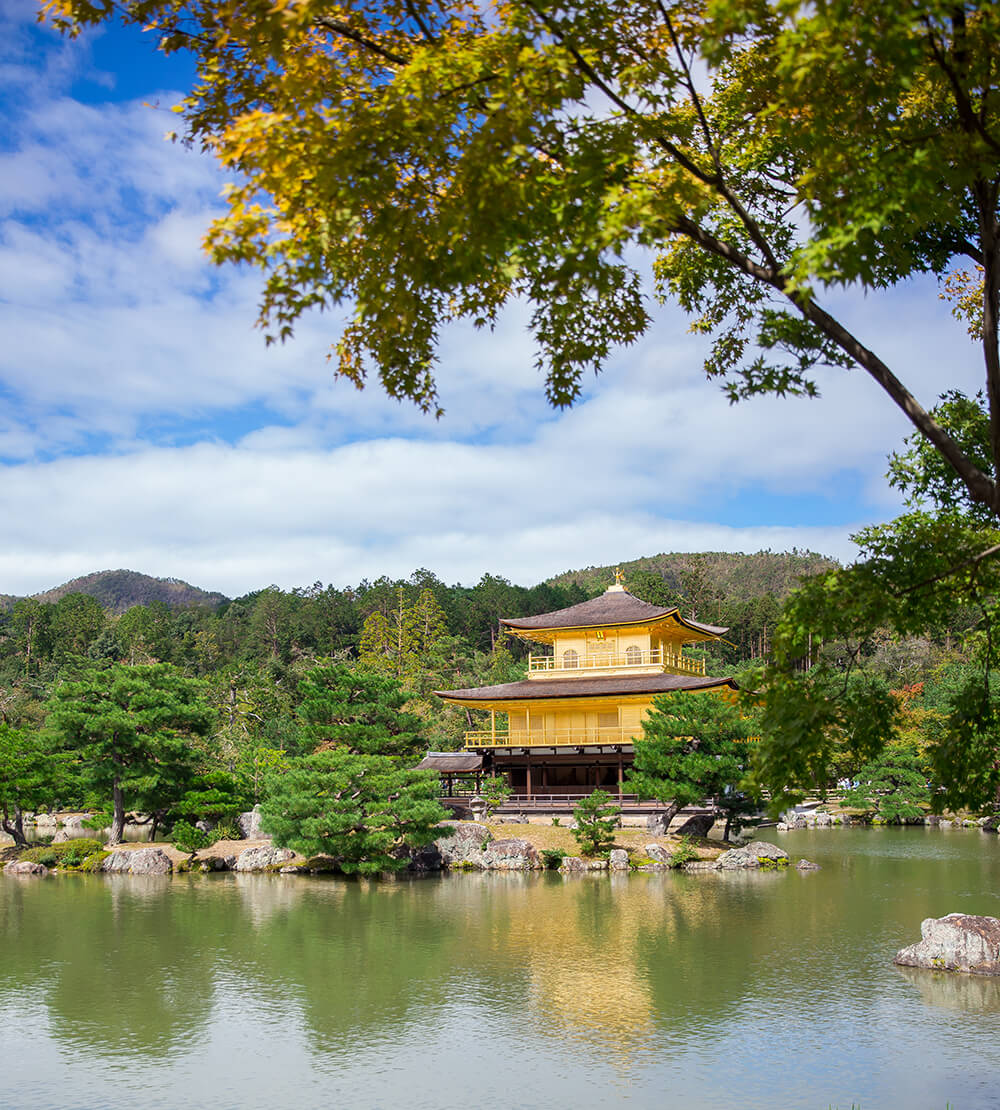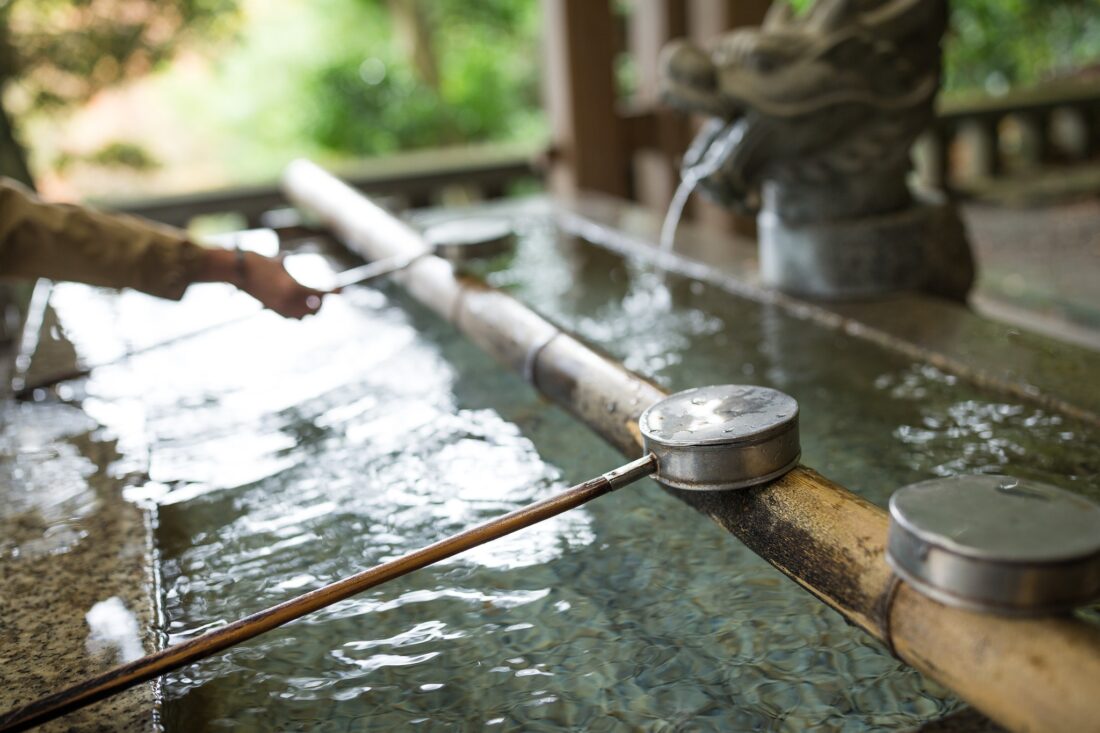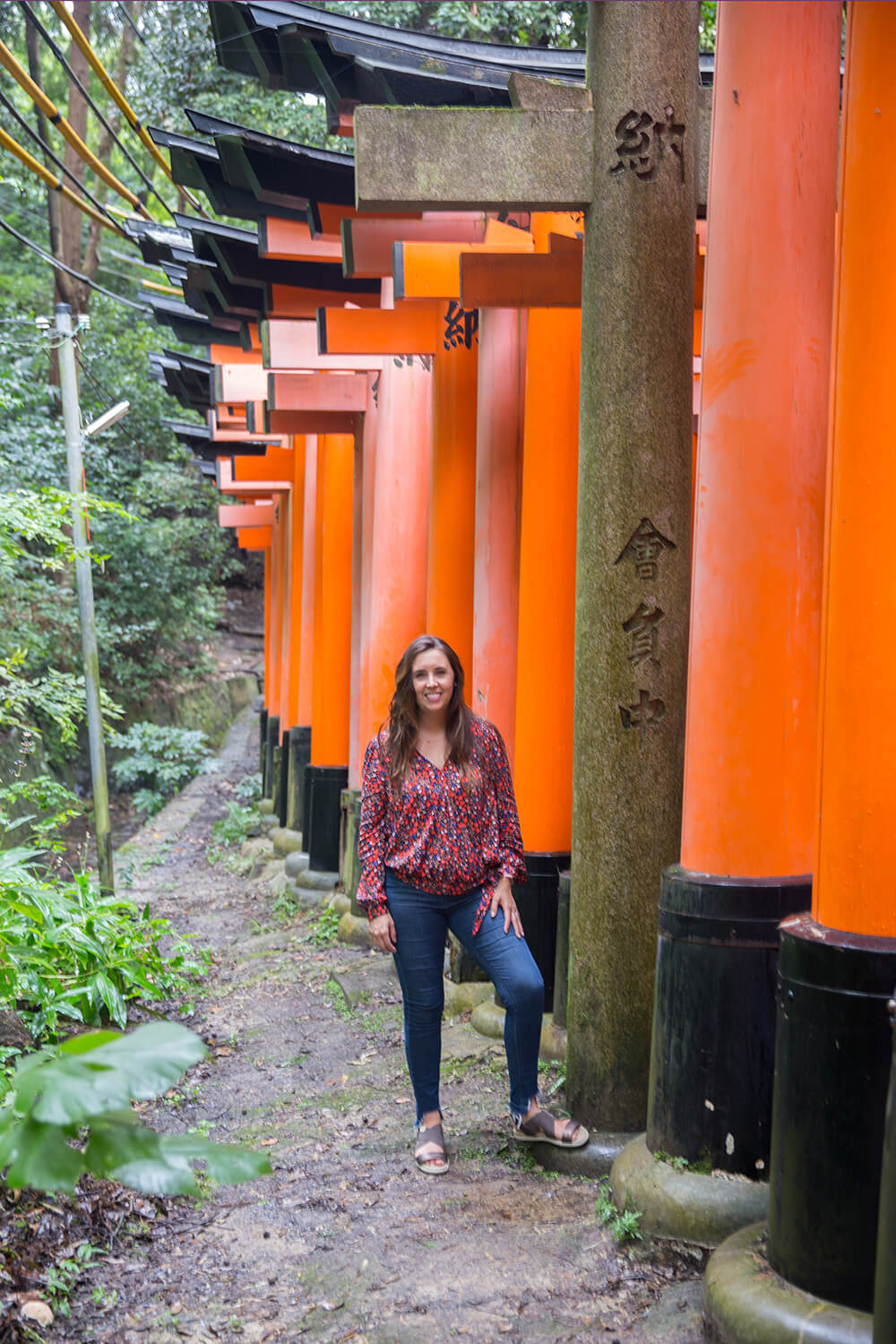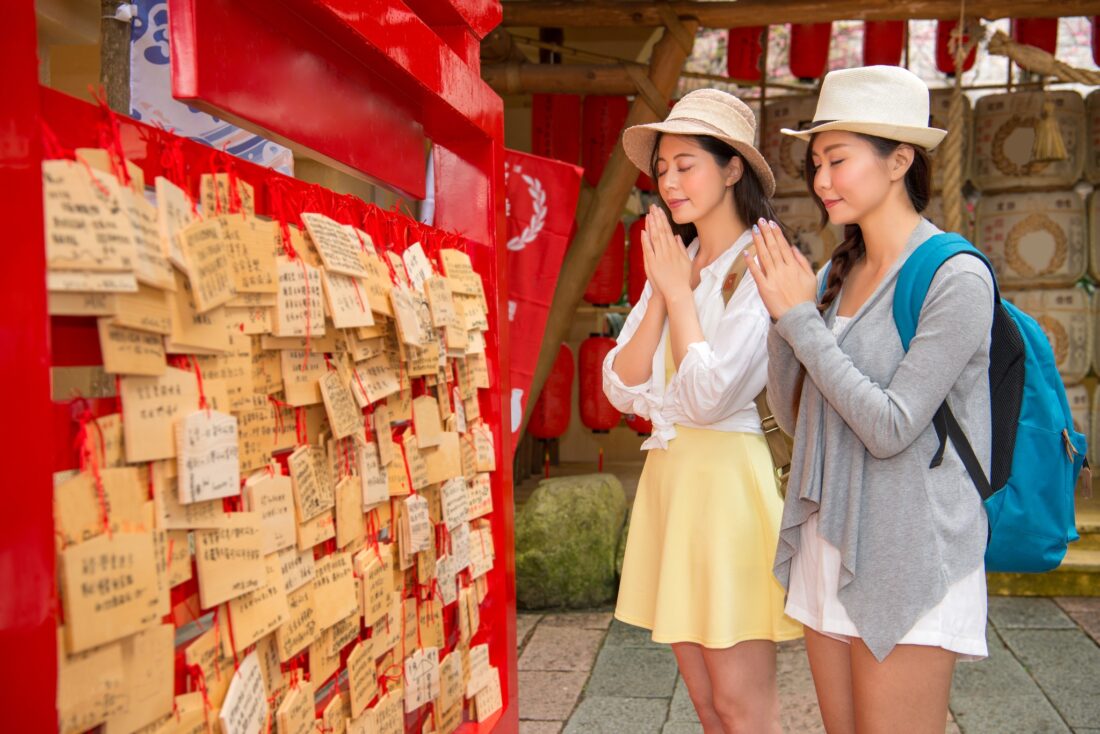What is the Difference Between a Japanese Shrine and a Japanese Temple?
There are two easy ways to tell a shrine and temple apart. First, shrines have a simple gate, called a torii, that separates the human world and the sacred ground, while the gates of a temple, or sanmon, look more like a large house rather than a gate. Second, temples almost always have Buddhist images or statues, and shrines do not. So basically, gods reside in shrines, and Buddhas reside in temples.

What to Know Before You Go – Japanese Shrine and Temple Etiquette
Shrines are an important part of Japanese culture and history. They are places of worship where people go to pray and pay their respects. There are over 80,000 shrines in Japan, so it’s likely you’ll come across one during your travels. While they are open to everyone, there are certain etiquette rules that should be followed. Here are a few things to keep in mind next time you visit a shrine in Japan.
Take Off Your Hat and Shoes
When you enter a shrine, you will see a sign that says “hats off” or “no shoes.” This means that you should take off your hat and shoes before entering the shrine grounds. If you don’t see a sign, it’s always better to err on the side of caution and take them off anyway. At least remove your hat.

Purify Yourself Before Entering the Shrine
You will see a large torii gate when you enter the shrine grounds. This is the gateway to the shrine, and it is considered to be very sacred. You should walk through the torii gate with respect and reverence. Once you’re inside, you will see a wash basin, called a chozuya. You should use this to cleanse your hands and mouth before praying at the altar. Here is how to wash:
- Fill the ladle with water and pour some water on your left hand
- Then pour water on your right hand.
- Next, clean your mouth by holding the ladle in your right hand again and pouring some water into your left hand and rinse lightly – do not wash your mouth directly from the ladle, please!
- Finally, hold the ladle vertically, allowing the remaining water to trickle down the handle and clean it.
Be Quiet and Respectful
Shrines are places of worship, so it’s important to be quiet and respectful. Avoid talking loudly or laughing while you’re on the grounds. If you need to take a phone call, step away from the main shrine area to do so.
Don’t Touch the Offerings
You will often see offerings at shrines, which are gifts that people have given to the gods. These can be anything from food to flowers to money. It’s considered bad manners to touch or move these offerings, so resist the urge if you’re tempted!
Entering a Shrine
- Bow slightly
- Put a coin in the box
- Ring the bell 2 or 3 times to signal to the gods that you have arrived
- Deeply bow twice
- Clap twice
- Pay your respects, remembering to thank the gods
- Deeply bow once

The same rules apply to entering Japanese Temples. After you purify, follow these steps when entering a temple:
- Burn incense. The scent is food for the Buddha. Lighting your own incense stick off the burning sticks of others is not recommended since it means taking on their sins.
- Bow slightly
- Put a coin in the box
- Ring the bell 2 or 3 times
- Bow slightly and pay your respects, putting your hands together but don’t clap. It is recommended that you hold a string of beads or a rosary while you pray. Don’t forget to thank the Buddha!
- Bow slightly
Shrines and temples are an essential part of Japanese culture and should be treated with respect. The next time you visit a shrine or temple, remember to take off your shoes and hat, be quiet and respectful, purify yourself, put a coin in the box, burn incense, bow, and don’t touch the offerings. By following these simple rules of etiquette, you’ll ensure that you have a positive and meaningful experience no matter your spiritual beliefs.


